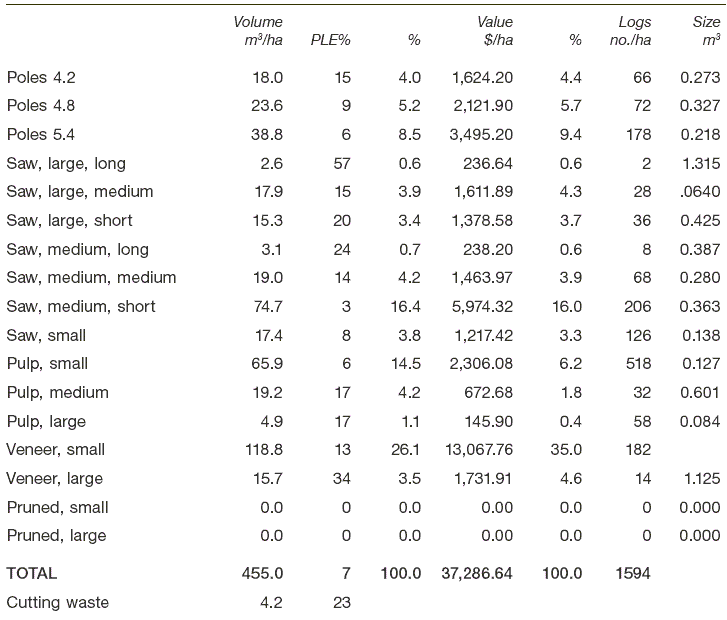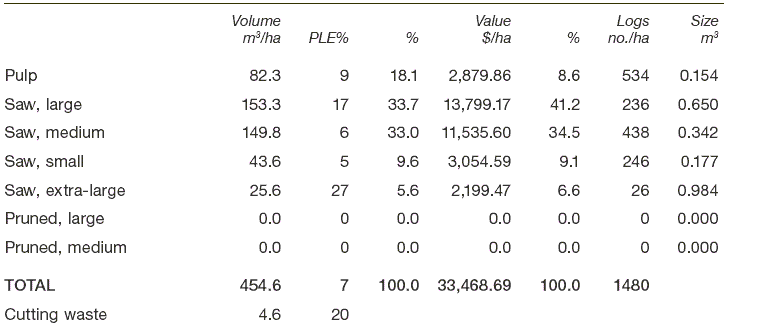Getting the most out of MARVL
NZFFA Information leaflet No. 12 (2005).
How much is your forest worth? Look at the standing trees and estimate the amount of logs you can cut from them. Sounds simple, however the results vary largely depending on who looks at the trees, and which logs they intend to sell. Will you as an owner allow someone else to capture its true value without thoroughly investigating all your options? If you’re not skilled, you need a consultant that can give you impartial advice. A good consultant will measure your trees using the MARVL system. Experienced users of MARVL can match the resource to log types for a range of market opportunities and assess the potential woodlot value. This article will explain the advantages of using MARVL 3.5 (the latest version), and highlight the practical implications of undertaking a MARVL inventory exercise.
MARVL, what is it?
For those of you that are not familiar, MARVL is a Forest Research software package that is defined as ‘Method for the Assessment of Recoverable Volume by Log Type’. MARVL is a proven tool that has been well used since 1976. Forestry consultants should utilise MARVL when employed by woodlot owners.
If you own a woodlot you would like to know what to expect from MARVL analysis and what to do with the information. In order to estimate the log products from standing trees it is necessary to make a visual assessment of the quality of the stem progressively from bottom to top. This requires setting up a quality code dictionary. The dictionary is a range of codes used to describe the stem characteristics in terms of qualities such as branch size, straightness, and roundness. Trees are coded into sections according to changes in these quality codes. The logs that could be cut from a stand are defined in terms of size (length and diameter), quality, those stem quality codes that are permitted in the logs, and the relative values of the logs to one another. Altering the log specifications or re-analysing the data can show the changes in value that may occur if different buyers were chosen. One example showed offers for a forest that was analysed by different consultants ranging from $484,000 to over $800,000 (Tree Grower, February 1997, page 24).
Worked example
The following tables show the changes in volume and value using MARVL 3.5 analysis when a decision is to be made whether to supply sawlogs, poles, veneer logs or pulp to the market:
Product analysis - Strategy 1

Product analysis - Strategy 2

The most obvious comparison is the difference in value, with the first strategy returning 10% more value per hectare than the second strategy. The increase in value in the revised strategy is due to the selection of higher value logs (veneer, poles) in the straighter better quality stems. There is a price premium for these products which has increased the revenue. If there was a real market demand for these products, MARVL allows the cutting strategy to be analysed prior to harvesting.
Results analysis
What sort of analysis should your consultant present you with? Comparisons in cutting specifications could potentially be endless. Firstly the consultant is able to simulate a range of potential cutting dates and establish the tradeoffs.
Obviously the longer the stand is left to grow, the higher output of larger more valuable logs it will produce. You might want to know if the trees are large enough to cut a quantity of high quality logs that you agreed to supply a local mill. As shown, other questions are easily answered by altering the log specifications and re-running the data. You can combine the two types of problems and decide how long you need to grow your stands before obtaining a target volume of a particular log grade. The new Windows-based environment in MARVL 3.5 allows analysis of multiple cutting strategies and projection dates all in one run, which is ideal for analyses of this type.
Summary
The best way to realise the value of using MARVL is to use it to solve real questions. Put forward your questions to the consultant rather than the consultant giving you a range of options to choose from. It is recommended that forest owners employ experienced consultants who use MARVL regularly.
Registered users are able to access a well-equipped software support system provided by Forest Research that offers extensive user support on the operating environment and inventory design.
This article by Nigel Pink of Forest Research, appeared in the November 2000 issue of the New Zealand Tree Grower.

 Farm Forestry New Zealand
Farm Forestry New Zealand